If you solely go by the trailer, Colin Farrell’s new Apple TV series might seem like a familiar L.A. noir: A private detective named John Sugar gets hired by a legendary Hollywood producer to investigate the disappearance of his granddaughter, and soon finds himself unraveling a wicked web of family secrets.
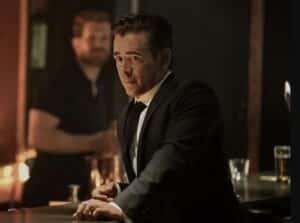
A genre all its own, noir is a favorite of many film buffs, and that includes John Sugar. Actually, he refers to himself as more of a “film addict.” Unlike his predecessors in City of Angels detective lore, Farrell’s Sugar is aware of the cinematic universe that predates him, frequently summoning classic movies and apparently using them as source material to crack his case. Archival footage from the films is scattered throughout the episodes, giving us a peek into Sugar’s mind and an education in the dark and often subversive history of film noir and other Hollywood classics that have so clearly inspired our troubled sleuth.
To follow Sugar’s references — and round out our collective film school education — the Watercooler has compiled a list of the movies referenced in the series to better understand their significance, beginning with the first two episodes that dropped at launch. As for what they might reveal about Sugar and his modern day Hollywood mystery, we’ll leave that to your own inner PI.
Kiss Me Deadly (1955)
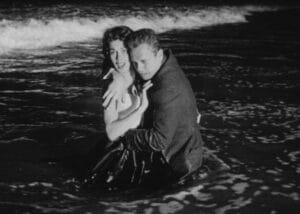 When it’s referenced: Episode One. The Story: Private detective Mike Hammer (Ralph Meeker) becomes embroiled in a complex mystery surrounding a woman named Christina (Cloris Leachman) after she asks him to remember her — before enigmatically mentioning “the great whatsit.” As Hammer delves deeper into the puzzling case, he uncovers a trail of grisly violence, high-stakes deceit, and (literally) radioactive secrets.
When it’s referenced: Episode One. The Story: Private detective Mike Hammer (Ralph Meeker) becomes embroiled in a complex mystery surrounding a woman named Christina (Cloris Leachman) after she asks him to remember her — before enigmatically mentioning “the great whatsit.” As Hammer delves deeper into the puzzling case, he uncovers a trail of grisly violence, high-stakes deceit, and (literally) radioactive secrets.
The Significance: Released at the height of Cold War nuclear paranoia, Kiss Me Deadly is one of two noirs to be selected for preservation by the Library of Congress. Adapted from a Mickey Spillane novel, the film’s narrative inventions and stylistic flourishes left their mark on French New Wave directors including Truffaut and Jean-Luc Godard and on modern filmmakers like Quentin Tarantino.
Where to stream it: Mubi
The Big Heat (1953)
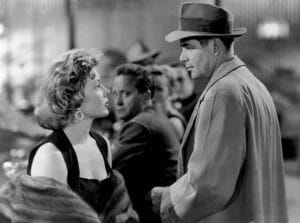 When it’s referenced: Episode One. The Story: Police detective Dave Bannion (Glenn Ford) investigates the apparent suicide of a fellow officer, but as he gets closer to the truth, he stumbles upon corruption and organized crime in his own department. His relentless quest puts him in the crosshairs of powerful criminals that include some of his own colleagues.
When it’s referenced: Episode One. The Story: Police detective Dave Bannion (Glenn Ford) investigates the apparent suicide of a fellow officer, but as he gets closer to the truth, he stumbles upon corruption and organized crime in his own department. His relentless quest puts him in the crosshairs of powerful criminals that include some of his own colleagues.
The Significance: This one appears to be one of John Sugar’s favorite detective films, and it’s the second noir to be chosen by the Library of Congress for its cultural importance, arriving as it did soon after the 1951 “Bloody Christmas,” in which LAPD officers beat five Mexican Americans, leading to the events that were chronicled in LA Confidential. The Big Heat also made a splash as it upended noir conventions, which tend to involve a femme fatale who lures a man to his downfall. In The Big Heat, it’s a “monsieur fatale” who becomes the catalyst for ruin.
Where to stream The Big Heat: YouTube Premium
Johnny Guitar (1954)
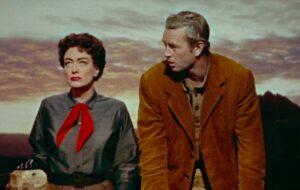 When it’s referenced: Episode One. The Story: Vienna (Joan Crawford) runs a saloon and gambling spot in the gun slinging Wild West, a soon-to-be boomtown thanks to a new railroad. But tensions come to a boil when a powerful local rancher, Emma Small (Mercedes McCambridge), accuses Vienna and her lover, Johnny Guitar (Sterling Hayden), of collaborating with a band of outlaws.
When it’s referenced: Episode One. The Story: Vienna (Joan Crawford) runs a saloon and gambling spot in the gun slinging Wild West, a soon-to-be boomtown thanks to a new railroad. But tensions come to a boil when a powerful local rancher, Emma Small (Mercedes McCambridge), accuses Vienna and her lover, Johnny Guitar (Sterling Hayden), of collaborating with a band of outlaws.
The Significance: Crawford bought the rights and insisted on changes to the script, ultimately leading to this “subversive Western,” which both elevates and punishes the two powerful women at its center. The men bemoan their marginalized status as references to the dangers of mobs and McCarthyism-style inquisitions underscored what the writers and producers were wrestling with at the time.
To truly understand how daring the film was for its time and to witness its critical reception 60 years ago, read The New Yorker feature from 2022, written by Richard Brody, who describes it as a “cinematic masterpiece.”
Where to stream it: YouTube Premium
The Strange Love of Martha Ivers (1946)
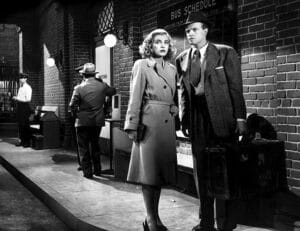 When it’s referenced: Episode One. The Story: A wealthy heiress eager to escape the town that bears her name, Martha Ivers (Barbary Stanwyck) and her husband Walter, the District Attorney, get a visit from a long lost childhood friend, Sam. He’s surprised to learn of their unlikely marriage, and when he approaches Walter to help with the case of a woman falsely accused of a crime, he begins to piece together what happened the night he left town — when the much younger Martha was there for her abusive aunt’s death.
When it’s referenced: Episode One. The Story: A wealthy heiress eager to escape the town that bears her name, Martha Ivers (Barbary Stanwyck) and her husband Walter, the District Attorney, get a visit from a long lost childhood friend, Sam. He’s surprised to learn of their unlikely marriage, and when he approaches Walter to help with the case of a woman falsely accused of a crime, he begins to piece together what happened the night he left town — when the much younger Martha was there for her abusive aunt’s death.
The Significance: An Oscar winner for best screenplay, this is the film that introduced Kirk Douglas to the world. (He got the part after his old drama school friend Lauren Bacall recommended him to the producer.) But it’s remembered as a quiet critique of how wealth corrupts people, and the impossibility of escaping consequences, even with privilege.
Where to stream it: Pluto
Dead Reckoning (1947)
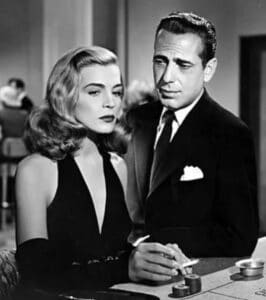 When it’s referenced: Episode Two. The Story: After being wounded in WWII, Rip Murdock (Humphrey Bogart) and Johnny Drake (William Prince) are sent to Washington, D.C. by train, but no one tells them why. When they learn they’re about to receive Medals of Honor, Johnny jumps off the train and disappears. Rip starts investigating, only to find cover ups, threats to his life and, yep, a femme fatale: Coral Chandler (Lizabeth Scott).
When it’s referenced: Episode Two. The Story: After being wounded in WWII, Rip Murdock (Humphrey Bogart) and Johnny Drake (William Prince) are sent to Washington, D.C. by train, but no one tells them why. When they learn they’re about to receive Medals of Honor, Johnny jumps off the train and disappears. Rip starts investigating, only to find cover ups, threats to his life and, yep, a femme fatale: Coral Chandler (Lizabeth Scott).
The Significance: Directed by John Cromwell, the father of James Cromwell — who plays the Hollywood mogul who hires Farrell’s Sugar — Dead Reckoning weaves together all the key ingredients of a noir classic and sets them against the immediate aftermath of war. Bogart, like his comrades in the genre, is all deadpan snark, smoky voiceovers, and suspicions…especially of attractive women. And Coral’s character bears some resemblance to Melanie Macintosh (Amy Ryan) in Sugar.
Where to stream Dead Reckoning: Google Play
In a Lonely Place (1950)
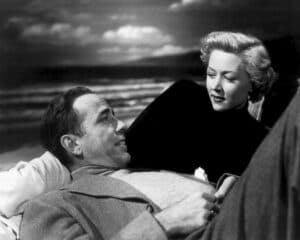 When it’s referenced: Episode Two. The Story: After the troubled, hard-drinking screenwriter Dixon Steele (Bogart again) becomes the prime suspect in a murder, his volatile temper and tumultuous relationship with his neighbor Laurel (Gloria Grahame) come under intense scrutiny as the two fight their feelings for each other.
When it’s referenced: Episode Two. The Story: After the troubled, hard-drinking screenwriter Dixon Steele (Bogart again) becomes the prime suspect in a murder, his volatile temper and tumultuous relationship with his neighbor Laurel (Gloria Grahame) come under intense scrutiny as the two fight their feelings for each other.
The Significance: The critic Kim Morgan described the movie as “one of the most heartbreaking love stories ever committed to film,” and according to Roger Ebert the film – despite representing an “atmospheric noir” — is really more of a psychological character study about a wounded man and the woman determined to save him from himself. Worth noting: The movie was actually produced by Bogart’s company when he was 50, and Colin Farrell, who is a few years shy of that milestone, executive produced Sugar.
Where to stream it: Tubi
Knock on Any Door (1949)
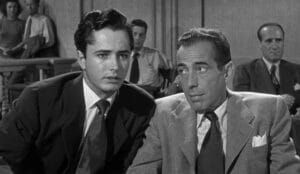 When it’s referenced: Episode Two. The Story: Another Bogart classic, in this one he crosses over to the savior role as defense attorney Andrew Morton, who agrees to take on the case of Chicago delinquent Nick Romano (John Derek in his breakout role), who has gone from petty crime to being on trial for the death penalty as the accused killer of a cop. Romano’s motto is “Live fast, die young, and leave a good looking corpse,” so everyone is skeptical of the guy. But after Morton bears witness to the circumstances of Romano’s life, he begins to understand how poverty and the flaws in the American legal system are playing a bigger part in the teenager’s fate.
When it’s referenced: Episode Two. The Story: Another Bogart classic, in this one he crosses over to the savior role as defense attorney Andrew Morton, who agrees to take on the case of Chicago delinquent Nick Romano (John Derek in his breakout role), who has gone from petty crime to being on trial for the death penalty as the accused killer of a cop. Romano’s motto is “Live fast, die young, and leave a good looking corpse,” so everyone is skeptical of the guy. But after Morton bears witness to the circumstances of Romano’s life, he begins to understand how poverty and the flaws in the American legal system are playing a bigger part in the teenager’s fate.
The Significance: A courtroom drama underscored by social commentary, the film was notable at the time for shining a light on the root causes of criminal behavior, and it was not well received as a result. The New York Times’ film critic Bosley Crowther described it s a “pretentious social melodrama” and took aim at its message. But it would mark Bogart’s pivot to more socially-conscious films, and director Nicholas Ray would go on to direct James Dean in a more momentous classic about a troubled teen with a dark past, Rebel Without a Cause.
Where to watch: Plex TV
Sunset Boulevard (1950)
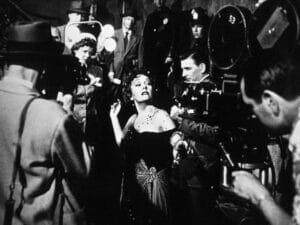 When it’s referenced: Episode Two. The Story: The ultimate Hollywood noir centers around Joe Gillis (William Holden), a down-on-his-luck screenwriter who becomes entangled with the former silent film star, Norma Desmond (Gloria Swanson). As their dynamic unfolds, the harsh truths of their situation begin to emerge, leading to an exploration of delusion, desire, and the dark side of Hollywood’s obsession with fame and youth.
When it’s referenced: Episode Two. The Story: The ultimate Hollywood noir centers around Joe Gillis (William Holden), a down-on-his-luck screenwriter who becomes entangled with the former silent film star, Norma Desmond (Gloria Swanson). As their dynamic unfolds, the harsh truths of their situation begin to emerge, leading to an exploration of delusion, desire, and the dark side of Hollywood’s obsession with fame and youth.
The Significance: One of the defining movies of the 1950s, Sunset Boulevard took home three Oscars and a place in the National Film Registry. More of a satire than other noirs of its era, the film skewers Hollywood’s grand illusions and grander egos. It also blurs the lines between fiction and reality, much as they are blurred in the lives of the characters, and it’s an oft-referenced reminder of the price of narcissism and fame…and of the price of living in fame’s orbit.
Where to stream Sunset Boulevard: Prime Video
Minnie and Moskowitz (1971)
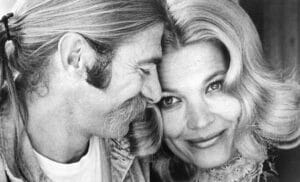 When it’s referenced: Episode Two. The Story: Stuck in an abusive relationship, Minnie dreams of moving to Los Angeles, even though “[the movies] make you believe in romance and love…and there just aren’t any Clark Gables, not in the real world.” When she finally makes the leap, she ends up meeting an optimistic parking attendant named Seymour Moskowitz. Their unlikely connection becomes something potent as they navigate their old wounds and discover something new.
When it’s referenced: Episode Two. The Story: Stuck in an abusive relationship, Minnie dreams of moving to Los Angeles, even though “[the movies] make you believe in romance and love…and there just aren’t any Clark Gables, not in the real world.” When she finally makes the leap, she ends up meeting an optimistic parking attendant named Seymour Moskowitz. Their unlikely connection becomes something potent as they navigate their old wounds and discover something new.
The Significance: The actor John Cassavetes wrote and directed the film with his wife, Gina Rowlands, starring as Minnie. And despite Minnie’s laments about Hollywood’s illusions, Cassavettes described his movie as a fairytale and dedicated it “to all the people who didn’t marry the person they should have.”
Where to stream Minnie and Moskowitz: Prime Video
The Killers (1946)
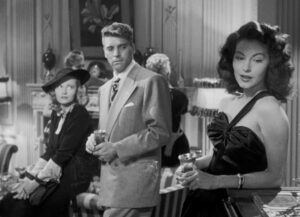 When it’s referenced: Episode 3 The Story: Insurance investigator Jim Reardon (Edmond O’Brien) is determined to unravel the mystery surrounding the beneficiary of former boxer-turned-gangster Ole “Swede” Andersen (Burt Lancaster). Swede’s violent demise, linked to a bank heist, triggers a chain of revelations about his shady past and his relationships with dangerous figures like Kitty Collins (Ava Gardner). Irishman, Swedes, gangsters, deceit, love triangles, betrayal, and Hollywood icons — yeah it makes sense this one is swirling around Sugar’s brain.
When it’s referenced: Episode 3 The Story: Insurance investigator Jim Reardon (Edmond O’Brien) is determined to unravel the mystery surrounding the beneficiary of former boxer-turned-gangster Ole “Swede” Andersen (Burt Lancaster). Swede’s violent demise, linked to a bank heist, triggers a chain of revelations about his shady past and his relationships with dangerous figures like Kitty Collins (Ava Gardner). Irishman, Swedes, gangsters, deceit, love triangles, betrayal, and Hollywood icons — yeah it makes sense this one is swirling around Sugar’s brain.
The Significance: Inspired by Ernest Hemingway’s 1927 short story of the same name, with the initial 20 minutes closely adhering to its narrative, the rest was an original screenplay by Hemingway himself. Often critical of adaptations of his work, Hemingway gave the film his approval.
The Killers was also Burt Lancaster’s debut as an actor, propelling him to stardom as the movie earned both commercial and critical acclaim – and four Oscars at the 1947 Academy Awards.
Where to watch The Killers: Prime
Double Indemnity (1944)
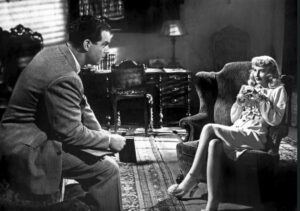 When it’s referenced: Episode 3. The Story: Another man in the insurance business, salesman Walter Neff (Fred MacMurray) becomes obsessed with Phyllis (Barbara Stanwyck) – a woman looking for life insurance for her husband. A classic noir temptress, Phyllis convinces Walter to help her murder her husband and collect the insurance money, exploiting the double indemnity clause in the policy to earn twice the payout – until Neff’s boss (played by Edward G Robinson) starts to become suspicious.
When it’s referenced: Episode 3. The Story: Another man in the insurance business, salesman Walter Neff (Fred MacMurray) becomes obsessed with Phyllis (Barbara Stanwyck) – a woman looking for life insurance for her husband. A classic noir temptress, Phyllis convinces Walter to help her murder her husband and collect the insurance money, exploiting the double indemnity clause in the policy to earn twice the payout – until Neff’s boss (played by Edward G Robinson) starts to become suspicious.
The Significance: Pushing the censorship boundaries at the time with its sexual content, the film – directed by Billy Wilder and written by Wilder and noir icon Raymond Chandler – also earned its place in the Library of Congress. While it was considered emblematic of the post WWII era crime dramas, an exploration of how the “morally weak” can be tempted into becoming murderers – it was based on the real life 1927 murder of the husband of a Queens housewife by the corset salesman she was having an affair with. Double Indemnity earned seven Academy Award nods, including for Best Picture, Best Director, and Best Actress.
Where to watch: Apple TV
Up next? Episode Six of Sugar arrives Friday, May 3rd on Apple TV+. Come back to the Watercooler for more classic film flashbacks and what they all mean.


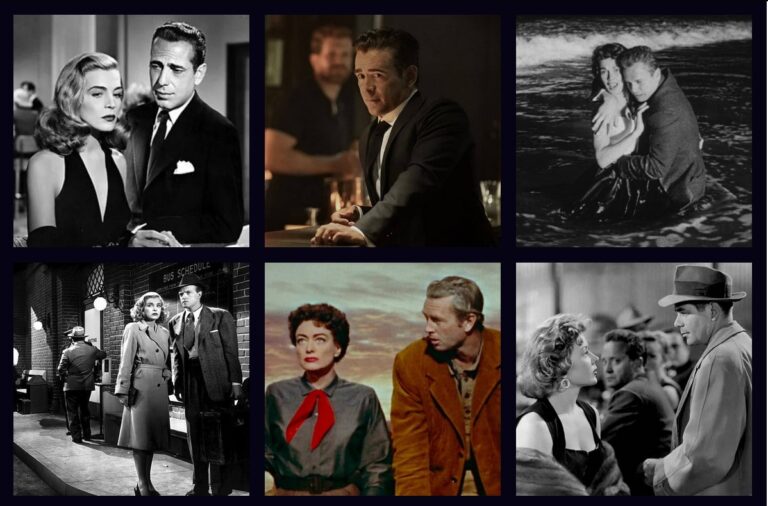
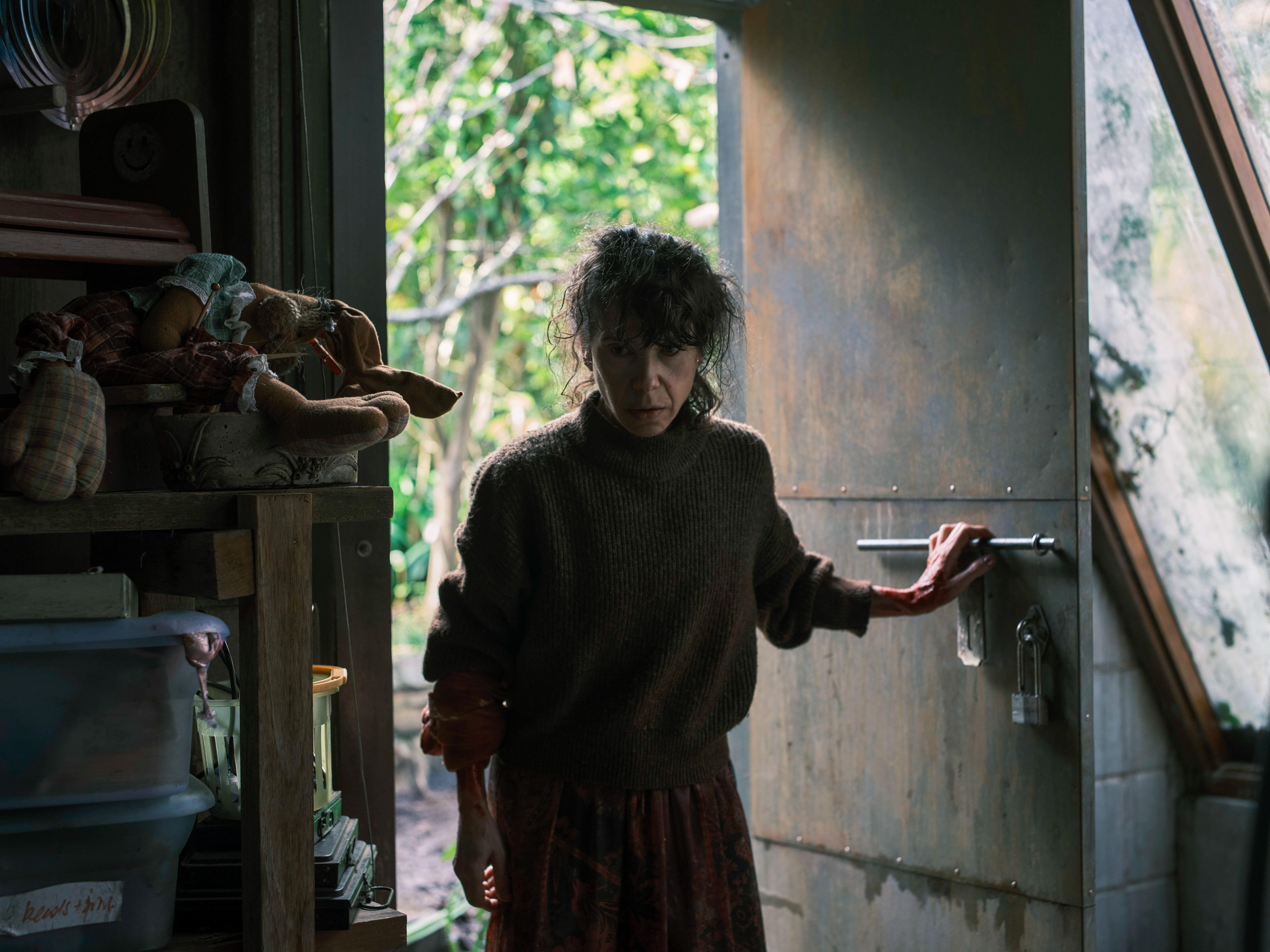
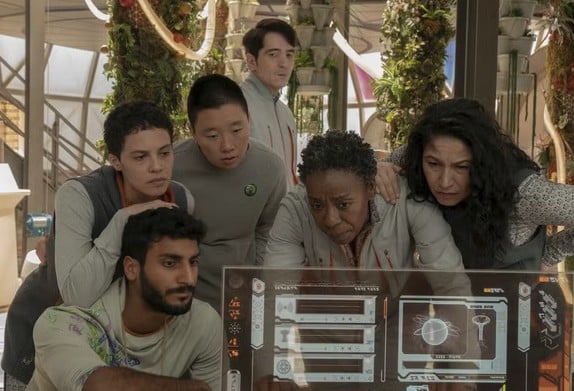




Start a watercooler conversation: